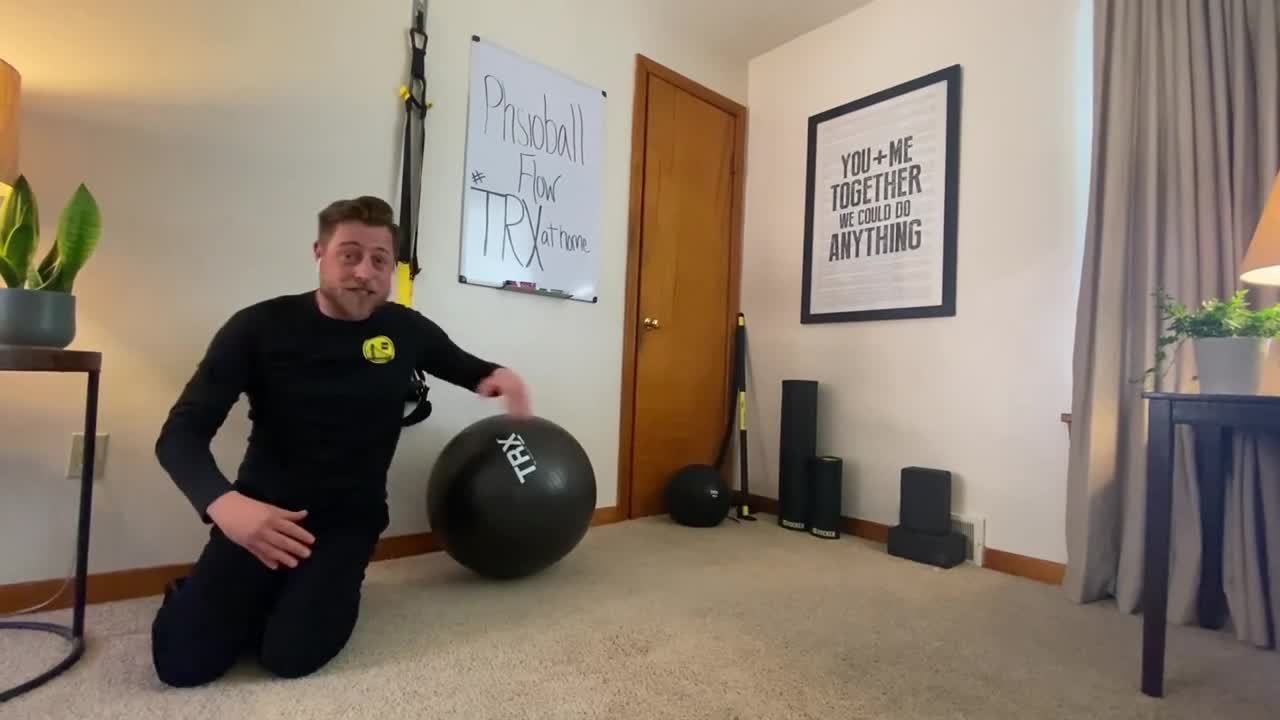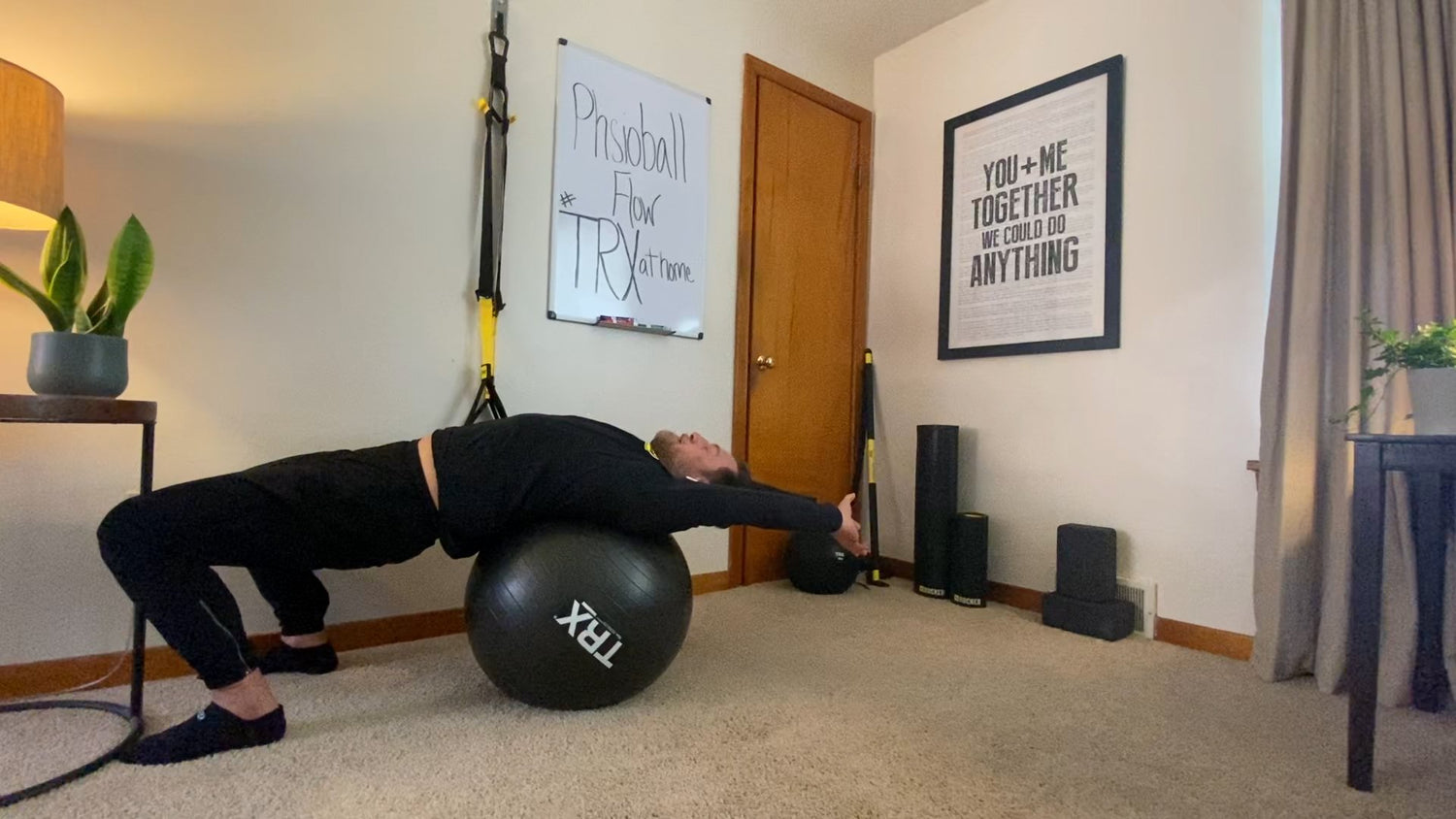
If you're like me, you’ve recently experienced a spike in the volume of sitting you do each day. While sitting is necessary, it comes with a range of risks. This three-part series is designed to give you clinical and practical information you need to move and perform well while sitting is a big part of your life.
The first part of the series will discuss the science of sitting and offer 'movement snacks' as a solution to break the sitting cycle. The second installment will focus on posture and alignment and will include a TRX Suspension Trainer anti-sitting routine. We will conclude this series discussing the secrets of decompression—not only for our tissues, but for our nervous system as well—including some key ways to enhance your health in small spaces.
Snacks?
My favorite word in the English language is “snacks”, and I am here to recommend snacking as a great way to avoid the negative effects of sitting. That is, 'movement snacks', of course! Before I start to get hungry, let's discuss the science behind sitting and its toll on our system.
Is Sitting the New Smoking?
For many of us, our typical pre-quarantine days consisted of 10,000 steps—or 5 miles—with plenty of exercise demonstrations sprinkled in. Recently, we have experienced a spike in the amount of sitting we do and, unfortunately, there are risks associated with that. (1)
It is easy to see and feel how sitting steals valuable mobility from our joints and tissues. Prolonged sitting can also be detrimental to our skeletal systems, inhibiting our ability to obtain proper skeletal alignment. A quick snapshot of this would be to think of how it might take a minute or two to stand correctly after a long car ride. This is because sitting can overload certain parts of our spine. (Spoiler alert: there will be more about that topic in this installment of the series.)
The negative effects of sitting go beyond our musculoskeletal system. Research has linked sitting for long periods of time with a number of health concerns (2). Too much sitting overall, in addition to prolonged periods of sitting, increases the risk of death from cardiovascular disease and cancer. Other direct effects include obesity, increased blood pressure, high blood sugar, and excess body fat around the waist.
Is sitting the new smoking? Not quite. While sitting has negative health benefits, smoking is still far worse. Researchers report smoking increases the risk of death 180 percent, while sitting points to a decrease in our longevity by 9 to 10 percent.
Research suggests that the traditional approach of exercising for three to four 30-minute sessions per week is not enough to counterbalance the negative effects of sitting (3). In other words, our bodies need more movement for nourishment.
'Movement Snacks'
We certainly recognize the value of nutrient timing, especially more frequent and smaller meals. Why not adopt a similar strategy for our movement regimen in the form of 'movement snacks'?
Whether its standing and reaching your arms to the ceiling, performing ten squats every hour, or doing 4- or 20-minute movement sessions, the goal is to move more frequently. 'Movement snacks' do not have to be long. Spending three to five minutes can go a long way. And, just like with our nutrition, we want to eat a rainbow of movements. This will help keep our minds active and bodies balanced. In this week's installment of Moves of the Week, we use a traditional tool to give you a nourishing flow. A stability ball (physioball) can help make sitting more tolerable, and it is a great tool for mobility and stability.
While performing these movements, make sure to have fun, and remember you do not have to be at your tissues’ end range to receive the benefit of the movement. In other words, do not feel the need to overstretch.
This sequence begins with a stability ball bridge—a great way to awaken the posterior chain of our bodies—and moves into segmental spine mobility. (Think Cat/Cow but on a stability ball.)
Use your arms to lengthen your full body by reaching in different directions, then transition to one side to lengthen the lateral line of the body in our long torso stretch. This movement highlights the benefits of what the physioball brings to the table! Use the shape of the physioball and create a distraction in your joints by “relaxing over the ball.”
This sequence finishes with “Stirring the Pot.” This movement creates 3-D spine stability and incorporates an important part of your body, your scapula. Think long and strong as you move your arms over a stable torso.
When performed together, these three movements work in synergy to lengthen the spine, mobilize the hips/T-spine and reset your posture. Don’t forget to use your breath to drive mobility and stability where you need it.
Frequent movement nourishes the whole body, not just the musculoskeletal system. Corrective exercise snacks can feed your skeletal alignment. Mobility shots can be helpful for your joints. A Met-Con medley can be great for your cardiovascular system. Supplement your mood and boost your energy with smaller, more frequent 'movement snacks'.
Join us next week for the next installment of this series as we build on the concept of 'movement snacks' and discuss posture and ergonomics and introduce an Anti-Sitting Sandwich on the TRX Suspension Trainer.
- Baddeley, B. Sornalingam, S., Cooper, M. Sitting is the new smoking: where do we stand? Gen Pract. 2016 May; 66(646): 258. doi: 10.3399/bjgp16X685009
- Vallance, J., Gardiner, P., Lynch, B., D’Silva, A., Boyle, T., Taylor, L., Johnson, K., Buman, M., Owen, N. Evaluating the Evidence on Sitting, Smoking, and Health: Is Sitting Really the New Smoking? American Journal of Public Health, 2018; 108 (11): 1478 DOI: 10.2105/AJPH.2018.304649
- Patel, A., Bernstein, L., Deka, A., Spencer-Feigelson, H., Campbell, P., Gapstur, S., Colditz, G., and Thun, M., Leisure Time Spent Sitting in Relation to Total Mortality in a Prospective Cohort of US Adults, American Journal of Epidemiology, Volume 172, Issue 4, 15 August 2010, Pages 419–429, https://doi.org/10.1093/aje/kwq155
Chris Nentarz currently lives in Buffalo, NY and has over 20 years' experience as a Physical Therapist and movement coach. Chris has been a part of the TRX movement for 10 years and running and is proud to be a TRX Master Instructor. His passion for helping people and his interest in all things movement shine through in his informative and effective sessions. Stay connected with Chris @cnentarz.


